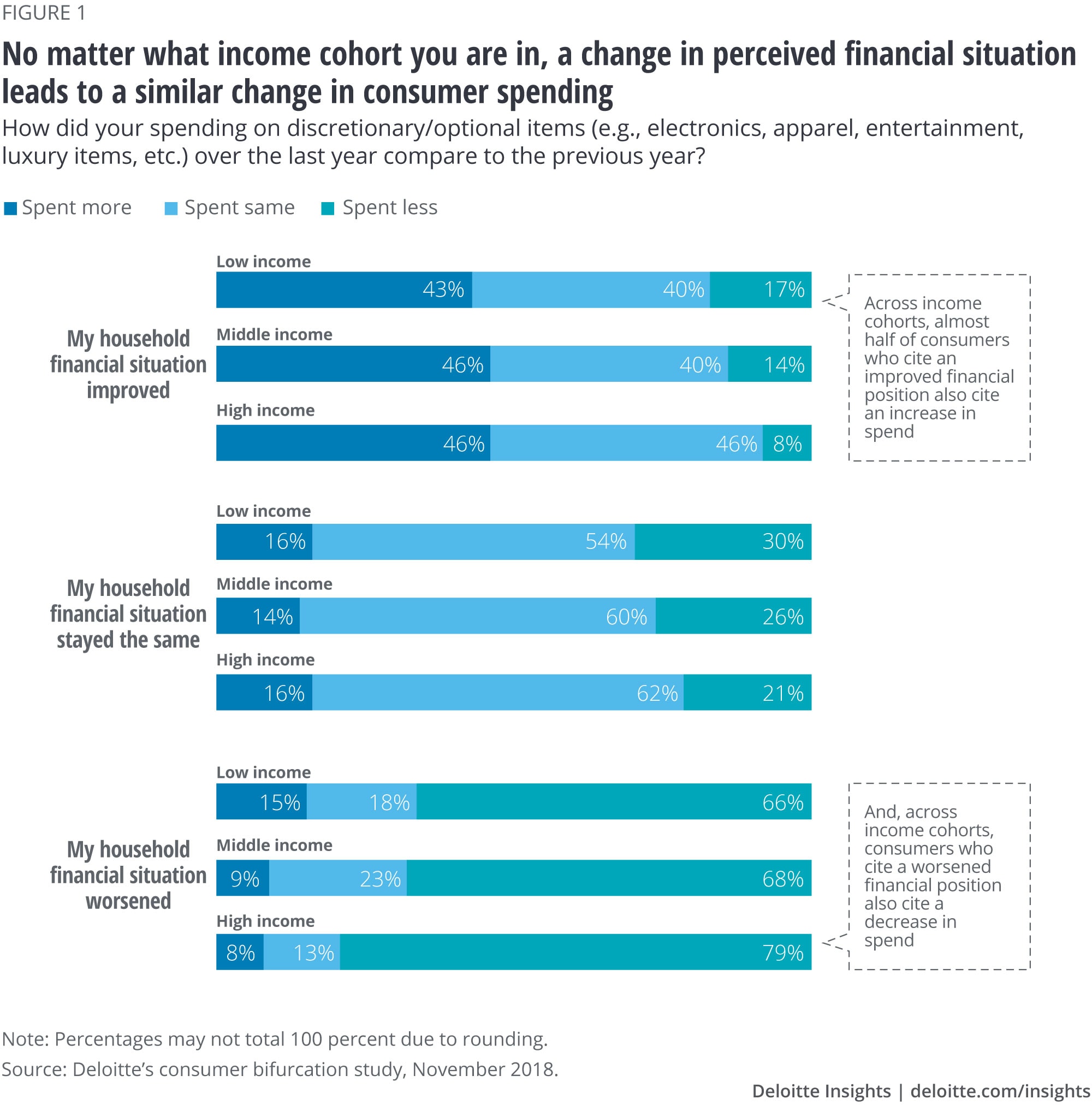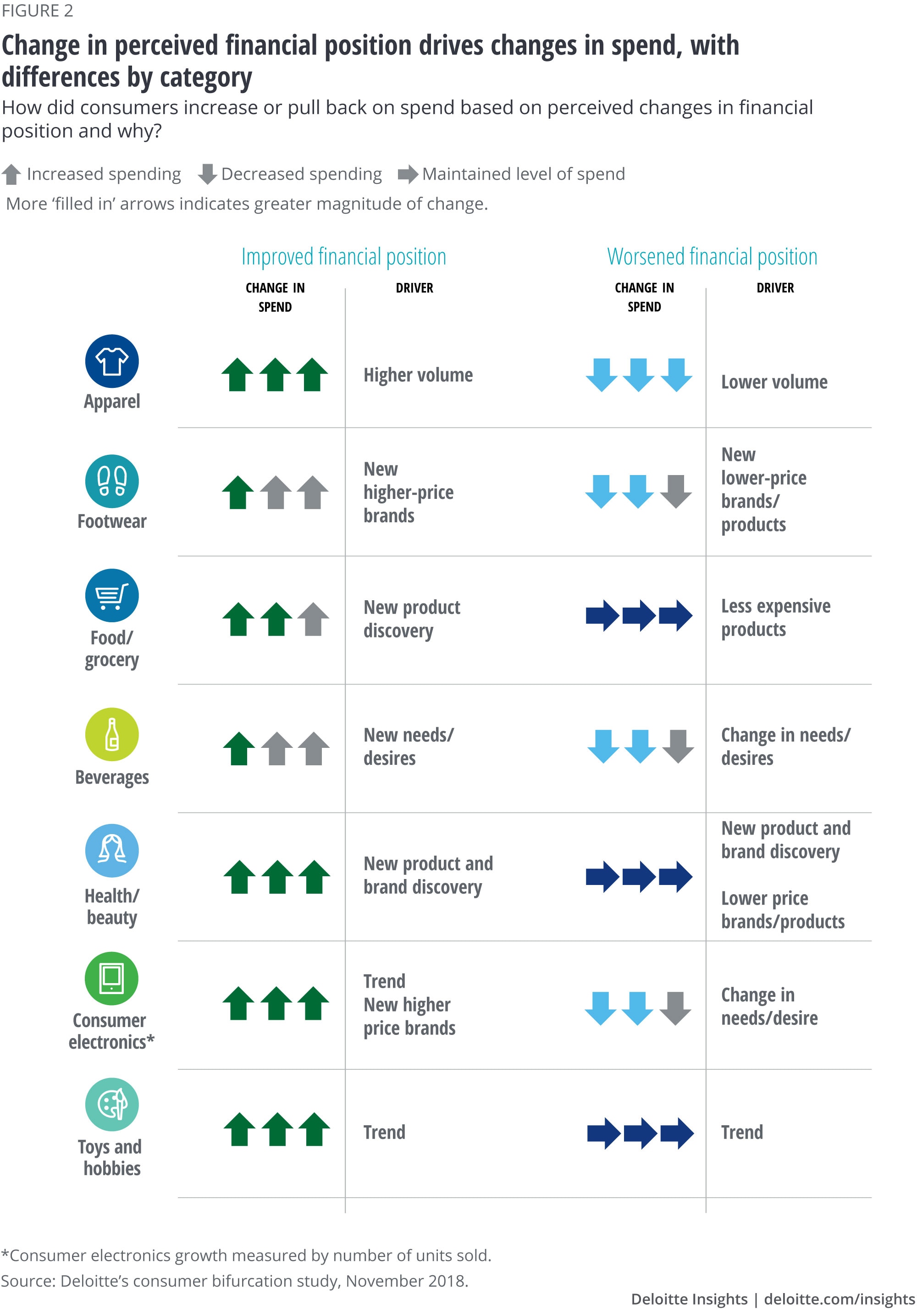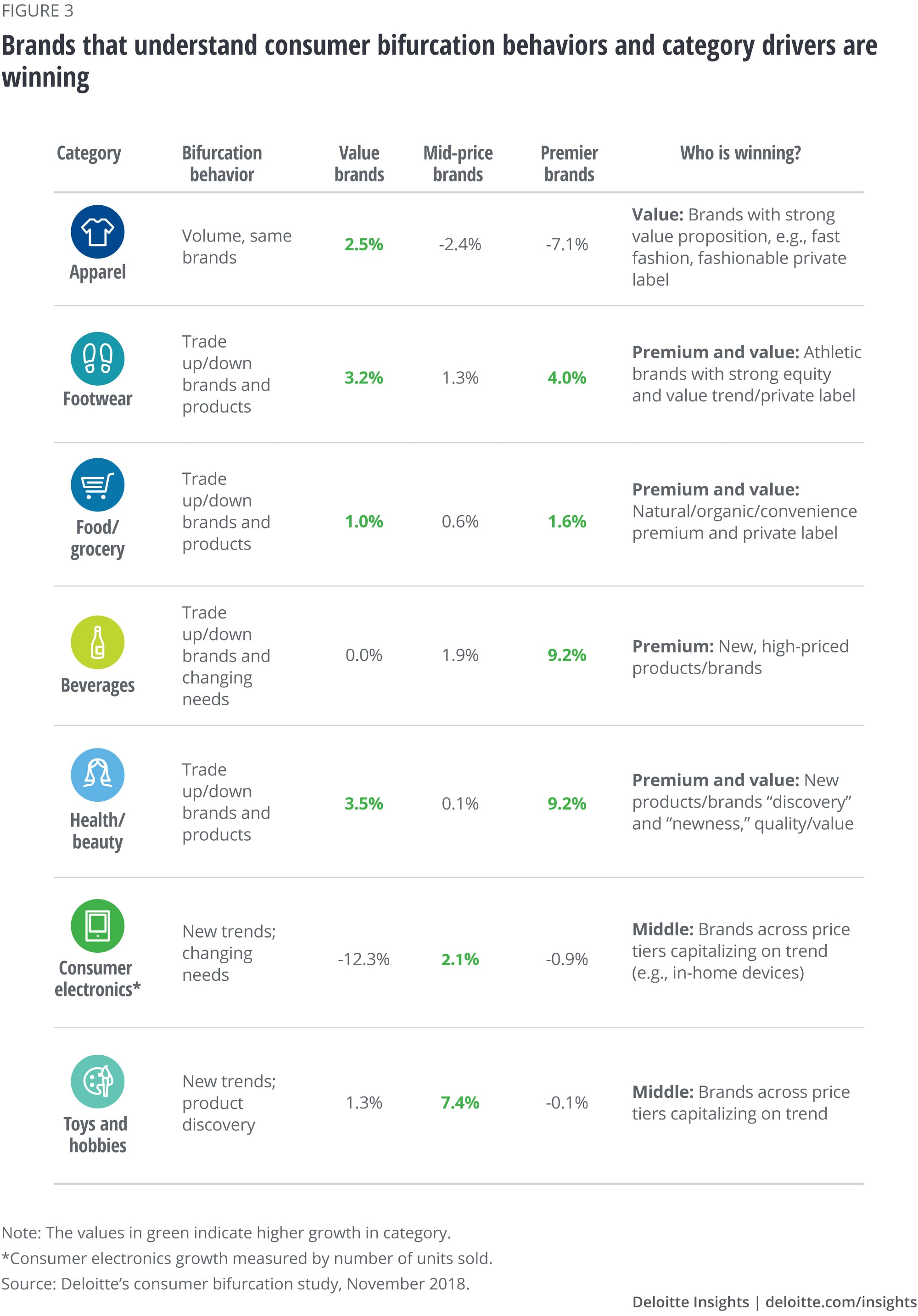
The consumer products bifurcation Opportunities to accelerate growth and “future proof” in the face of a potential recession
4 minute read
24 April 2019
Opportunities for consumer products companies to accelerate growth and “future proof” in light of consumer income bifurcation and the threat of a potential economic slowdown.
In our article “The great retail bifurcation,” we looked at the so-called retail “apocalypse” and asked how income determines where people shop.1 Now, we look at how income or financial position influences what people purchase.
Learn more
Create custom PDF or download the full report
Explore more articles on Retail and consumer products
Listen to the Great retail bifurcation podcast
Subscribe to receive related content on Consumer business
The connected consumer is leading the disruption in the consumer products industry, altering the competitive landscape across all consumer product categories. As a result, consumer products companies face a new set of strategic issues, including how to position brands to win with today’s digital-first consumer, how to optimize product portfolios to accelerate growth in new and traditional channels, and, increasingly, how to become “future-proof” in the face of the next consumer recession. The path to growth in today’s uncertain economic environment begins with the consumer itself.
With that in mind, in November 2018, we surveyed more than 3,000 consumers to understand which factors drive consumer buying patterns and, in particular, how income cohort and change in financial position impact purchase behavior. We also analyzed brand performance of over 1,100 brands to understand who is winning in this era of bifurcation.
What we found was that income bifurcation is widening, and this bifurcation is altering purchase behaviors differently by consumer products category. How much and why consumers change spend differs by category, and brands that understand the impact of consumer bifurcation behaviors and category drivers are winning. But there’s more to it than meets the eye.
What does income bifurcation mean for what and how much consumers purchase?
The US economy is in the midst of the longest-running economic expansion in its history: Real GDP (3.2 percent in the third quarter of 2018, after growing 4.2 percent in the second quarter) and real consumer spending continue to rise (up to 0.3 percent in November 2018, following an increase of 0.6 percent in October). However, when we look closely at income distribution, the rosy picture of consumer health begins to get cloudy. For the past decade, an outsized portion of the gains of the recovery have gone to the upper-income cohort, whose incomes have risen more than 13 times that of the lower-income cohort. The result is that the bifurcation between the high-, middle-, and lower-income tiers is growing progressively wider. That’s not all. As we dig deeper into the state of the consumer, we see a host of rising non-discretionary expenses cutting into disposable income,further widening the bifurcation, especially given that disposable income is only increasing for the high-income cohort.
However, our study results reveal that a perceived change in financial situation drives changes in purchase behaviors, and to a similar degree, across cohorts. No matter what income cohort one is in (even higher income), consumers who perceive their financial situation as worsening are more likely to cut spending. The change is spending was consistent no matter which income cohort a consumer belonged to (figure 1).

How and how much consumers shift spend differs by category
By category, we saw variations in the impact of consumer and income bifurcation: apparel, food/grocery, health/beauty, and consumer electronics showed a high degree of consumer bifurcation among product categories; beverages and toys/hobbies showed the least amount of bifurcation between the spending behaviors of the income groups; and footwear revealed only a moderate degree.
Purchase drivers also differed by category for both consumers with improving and worsening financial positions (figure 2). In certain categories, consumers bought the same brands, but shifted volume—that is, they purchased in greater or lesser quantities. In other categories, a perceived change in financial position was more likely to drive consumers to switch brands and products. In categories driven by trend and discovery, consumers sought new brands and products, whether perceived financial positions improved or worsened.

How do consumer income and spend bifurcation behaviors impact brand performance?
In our assessment of brand performance, we found that between 2017 and 2018, winning brands and products tended to have either a premium or a value-driven position, evidence that companies that understand consumer bifurcation behaviors and underlying category drivers are more likely to outperform in terms of growth (figure 3).2

What about millennials?
Millennials are often portrayed as irresponsible with their wallets, spending beyond their means. However, in our study, we found that the reverse is true—millennials are more likely than other generations to adjust shopping and purchase behavior based on changes in perceived financial position. Consequently, as the economic climate changes, this cohort is the one to watch as they will spend more or pull back in response.
Strategies for consumer products companies
Income bifurcation continues, and no matter what income cohort one is in, a perceived change in financial situation—for better or worse—drives change in shopping and purchasing behaviors, with differences by category. Winning brands have value propositions aligned with consumer and income bifurcation, leading to higher-than-average category growth, and winning brand strategies differ by category, based on category purchase drivers. As a result, consumer products companies have an opportunity to adapt marketing and commercial strategies to get ahead of a potential slowdown. Based on our consumer, category, and competitor research and analysis, we recommend consumer products companies take the following three steps:
- ASSESS the sensitivity of your category to income bifurcation and changes in consumers’ financial position.
- CHOOSE the levers to pull to optimize for income bifurcation and a potential economic slowdown. Levers to consider include brand/portfolio positioning and value proposition, product offering, communications and engagement, pricing, distribution, integrated business planning, and commercial/key account strategies.
- ADAPT portfolio, brand, product strategies, resource allocation, and go-to-market execution, by category.
Bottom line: Income bifurcation affects each category—with a perceived change in financial position shifting purchase behavior differently by category. Companies have the opportunity to realign strategies to accelerate growth and win.
Read the full report, The consumer products bifurcation: Opportunities to accelerate growth and “future proof” in the face of a potential recession.
Explore Retail and Consumer Products
-
The great retail bifurcation Article7 years ago
-
Capturing value from the smart packaging revolution Article6 years ago
-
New retail reinvigorates China’s imports Article6 years ago
-
M&A for growth in consumer products sector Article6 years ago









